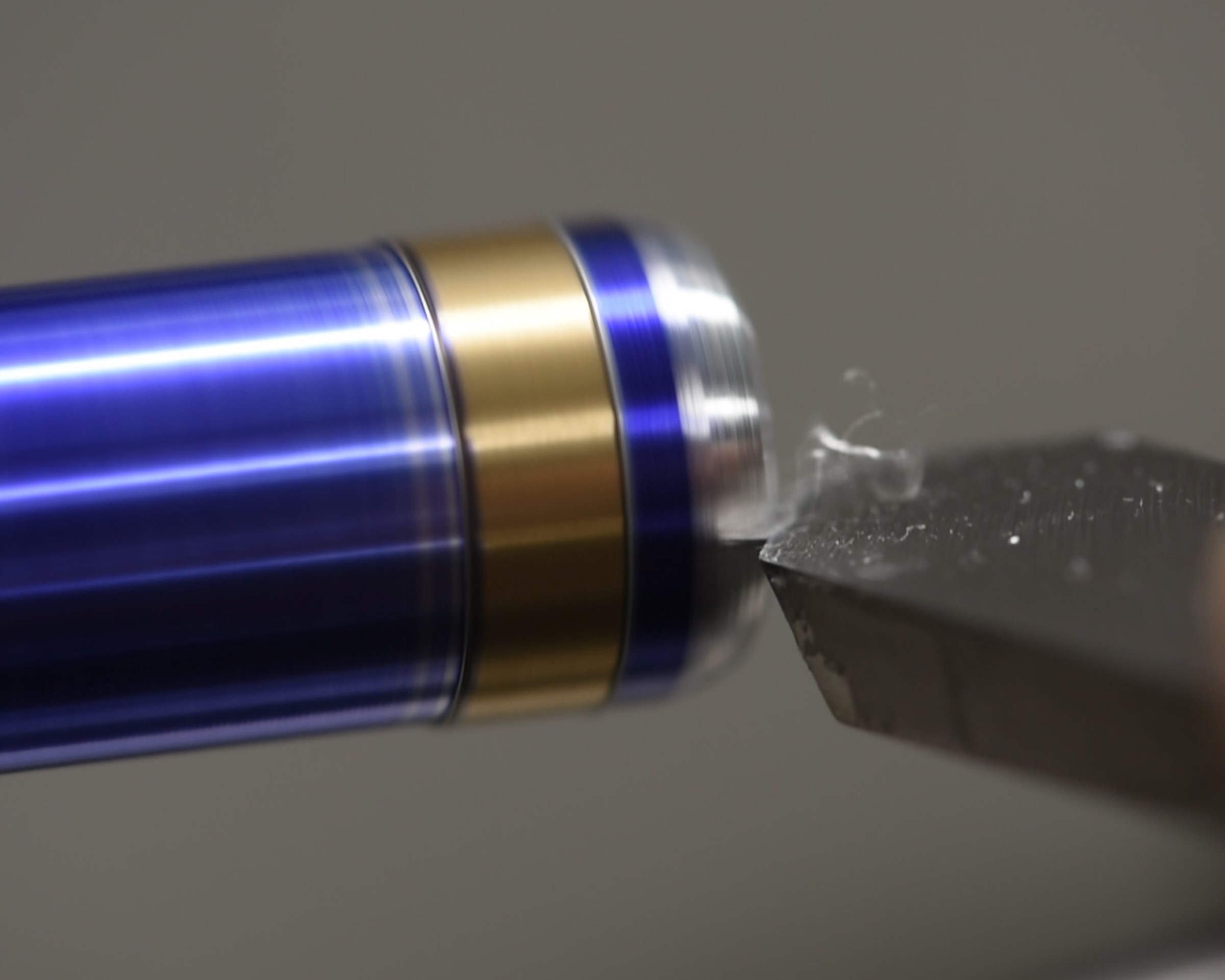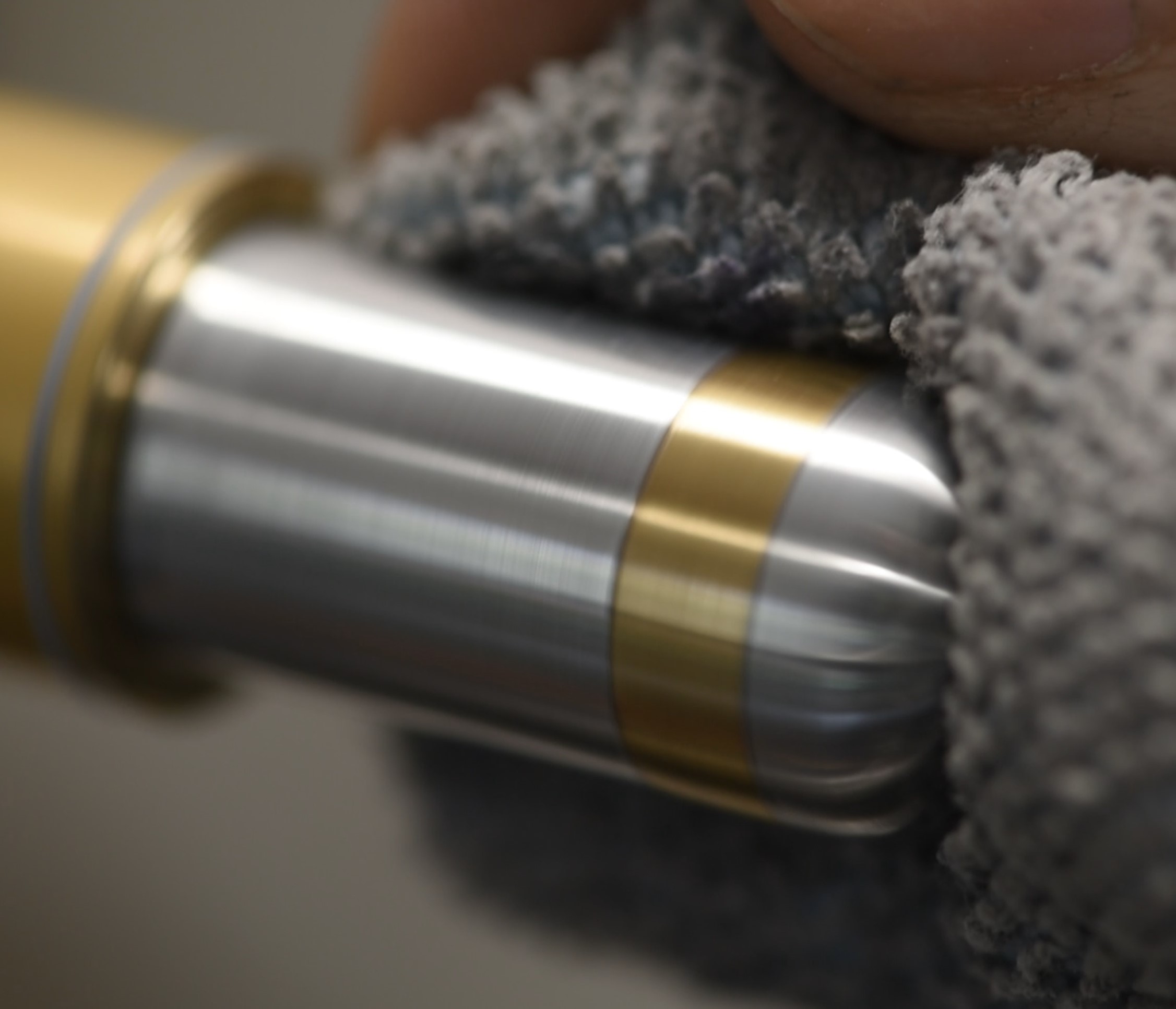Hand Turn the Retention Cap
This part's good fun and something perhaps a little different to normal. Much like with wood, metal can also be turned by hand to create exciting profiles. To do this on a normal metalworking lathe, you just need to install a manual tool rest and use gravers. For a tool rest I just use a section of 10mm hardened tool steel rod. It fits into my stock tool holder, cost me about £3, and thus far works quite well. I may get a proper one later, but for now it's a good compromise.

Now, you may notice some conspicuous brass thingamajigs here. These are a simple work-holding solution I figured out for this piece. Since the whole piece will need sanding and polishing later, there needed to be a way of holding it in the chuck without any part of it being unreachable. To do this, I just faced a piece of metal stock, then drilled and tapped an M4 hole in the end. From another piece of stock I turned down a 5mm spacer with a diameter of 16mm to simulate the glass panel. Simply screw the workpiece into the mount and we're good to go! Since the lathe will be rotating anti-clockwise the thread will tighten as pressure is applied, but hopefully not to the point where it snaps!


All that's left is to round the corners nicely to the correct profile. The key here is to use a sharp tool and keep pressure light; let the cutting edge do the work. Hand turning is amazingly fun, as you feel a connection with the material that's not available when operating handles. Sure, you could do this by moving the compound and sanding, but you'd be missing out.
Smoothing Time!
At last we're at the final step: finishing. Following directly from the hand turning, we can finish the piece up with some sanding to bring out a lovely finish. I've gone for a sort of satin-brushed look on this so skipped on some sand paper grits on purpose, but they'd look great mirror polished too. I set the lathe chuck speed to ludicrous and gently ran sandpaper along the surface, starting with 120 grit then progressing to 320 and finishing on 500. You can of course clean off the marking fluid before hand with acetone, but it seemed redundant given the sanding.


Finally, I gave it a light polish with some 6K grit compound and cleaned off with a microfibre towel and acetone. The polish helps to bring out the grain really nicely and adds that extra sheen to it.


And there we have it! It's not a quick process by any means, but I hope you enjoyed following along and appreciate the results. Often the little things like this go unnoticed in a log at first, but they can make all the difference!



MSI MPG Velox 100R Chassis Review
October 14 2021 | 15:04








Want to comment? Please log in.